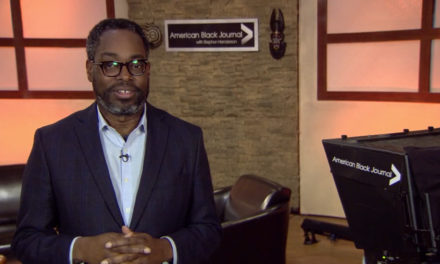Photographing Michigan’s night skies since 1998, photographer Shawn Malone, of Lake Superior Photo, knows a thing or two about photographing the northern nights and other auroras. In this Great Lakes Now featured story, Malone takes viewers on a journey through her experiences capturing from film cameras to using digital cameras now to create time lapses over Lake Superior. She unveils what people should be looking for, the challenges that can come with photographing at night, and why Michigan is one of the best places in the lower 48 states to see the northern lights.
Plus, we catch up with Nick Lake, the manager of theater experience and presentation for the Adler Planetarium, to talk about his weekly “Skywatch Wednesdays” YouTube series and how he makes the northern lights accessible to those unable to take a trip north at the planetarium.
Full Transcript:
Shawn Malone, Photographer: My photography and cinematography is Lake Superior-region based, inspired, and I’ve been at this for about 20 years.
Nick Austin, Great Lakes Now: Shawn Malone is a photographer in Marquette, Michigan, and she’s been photographing the night sky since 1998.
Shawn Malone: When I started out photography, just regular landscape photography, I was using film cameras, negative film or slide film. You would have to wait until you get the film back to see what you got. So when I got the film back, it was like, ‘Wow!’ I was just amazed. And then, like a once in 11-year event happened in 2004. It was an aurora that was in every direction, every color, and I shot two whole rolls of slide film that night.
Nick Austin: And when digital cameras became capable of capturing low light scenes, Shawn began shooting night sky time lapses, often featuring the northern lights.
Shawn Malone: And then I just really started learning all about space, weather, data and that kind of thing in order to try and put myself in the right position at the right time in order to be able to capture the aurora. You really have to scout out your own undiscovered locations where you are not going to have like a car light ruin your shot, you know, and if you plan a three hour shot for a time lapse, it’s something that can be an issue.
Here in Marquette County, where I’m at, we have a tremendous amount of public access to Lake Superior, and that allows people a chance to get to a dark sky location facing north over Lake Superior. That provides me, just geographically, the ability to look directly over Lake Superior and see a completely dark night sky facing north, directly north. And then I have a field of view that is one hundred eighty degrees to the east and west that has no obstruction. So that’s half of the battle in seeing the aurora, and the number two is getting rid of the obstructions and then being north enough in order to be able to catch the display. So this is one of the best places in the lower 48 to see the aurora.
Nick Austin: Nick Lake is Adler Planetarium’s manager of theater experience and presentation. He’s been introducing people to the wonders of the night sky since 2004 in the planetarium’s domed theaters. The real night sky can be less reliable, especially as you get further south.
Nick Lake, Manager of Theater Experience & Presentation, Adler Planetarium: The northern lights are visible occasionally from some of the Great Lakes latitudes. I’ve seen them several times, from just about halfway up the midpoint of the lower peninsula of Michigan. So just north of Muskegon. With nighttime landscape photography, you can allow the lens to drink in more and more light and add in this sort of canvas of light on the picture. And it really will add more than you can see with the naked eye, which some people say, ‘Well, it’s, you know, that’s not really what it looks like,’ but it is in fact real. It’s what is actually up there in the sky.
Nick Austin: One obstacle in seeing or photographing the night sky is light pollution.
Shawn Malone: Keep in mind that your night sky cameras now are much more sensitive than your eyes, so they’re really going to pick up any kind of light pollution that’s around. If you’re in Detroit, you just need to get out of Detroit because it’s just going to be too bright, and you won’t be impacted by cities further north where you really have a shot at looking at a nice dark sky. Same with Chicago, Milwaukee…
Nick Austin: Another source of troublesome light: the moon. If it’s too bright, it can obscure other celestial bodies.
Shawn Malone: When you get past the quarter moon, half moon, then you start to lose the darkness of the sky, so you do have to pay attention to that.
Nick Austin: Satellites are yet another concern. They’ve been orbiting above for decades, but they’re becoming more numerous.
Shawn Malone: Last February, I’m sure you’ve heard of Space X. They started launching their Starlink satellite constellation. The goal was to do every two weeks, have a launch of 60 satellites to eventually have thousands and thousands of satellites into this mega constellation that is encircling Earth. And I made it a point to follow the data on the satellite launches and try to track these things and document it. And it really gives a good look at how intrusive these satellite trains are to the night sky and the astronomers are just going nuts about it.
So yes, it’s very difficult to do a time lapse now of, let’s say, a two or three hour shot with the Milky Way going through the frame, with just not being able to watch it because it’s so jarring from all the satellites flying through the scene. And it’s very disturbing to the point that we don’t even know if we can continue with the night sky stuff because it’s just going to be so busy with these trains of satellites.
Nick Austin: In early 2020, the COVID-19 pandemic meant Nick Lake had to change the way he talked to the public about the night sky.
Nick Lake: When Adler closed to the public in middle of March, I was suddenly thrust into a place where I didn’t have domed theaters to present content, and I was itching for a way to continue to communicate with the public about the wonders of the sky, what they could see and to inspire them to get out there and look up for themselves.
Nick Austin: Nick now hosts the planetarium’s video series Skywatch Weekly.
Nick Lake: ‘Hey, stargazers, welcome back!’ Skywatch Weekly is a 5 to 10 minute weekly video series that we started at the middle part of April. Most of what we talk about is really visible from the northern hemisphere, specifically the mid-northern latitudes. So the entire Great Lakes region. We’re trying to keep it accessible to all audiences. There really is no substitute for being out and seeing these things for yourself in the sky. That’s what we hope to inspire people to do; kind of give examples of what you might see if you know where to look and when to look.
We’re kind of bringing the wonders of space to you and then helping you realize that it’s right outside your front door. You can go out there and see a lot of it for yourself. We really encourage people to start with the moon. It’s the easiest, the most obvious thing to see up there. So I think our moon, as big and as bright as it is, it really-really allows the imagination to-to work and hopefully inspires people to get out there and see more.
Shawn Malone: We can really get caught up in the screens of phones and computers, so it’s really nice to just unplug, calm down, and just take a walk or just observe what nature has to offer. I think it’s really important for people to not forget that.
Nick Lake: I think through the time of COVID, which we’re still in and we’ll be in for a while, it’s been important to find ways where we can still be united and not just separated and socially distanced, and the sky is a great way to do that, and especially the Moon. If the moon is full, it’s full for everyone. Everyone that night from a dark sky on planet Earth will see a full moon. And whatever phase it might happen to be. So I think it does lend a sense of unity, a sense of the same sky that we’re looking up at.




